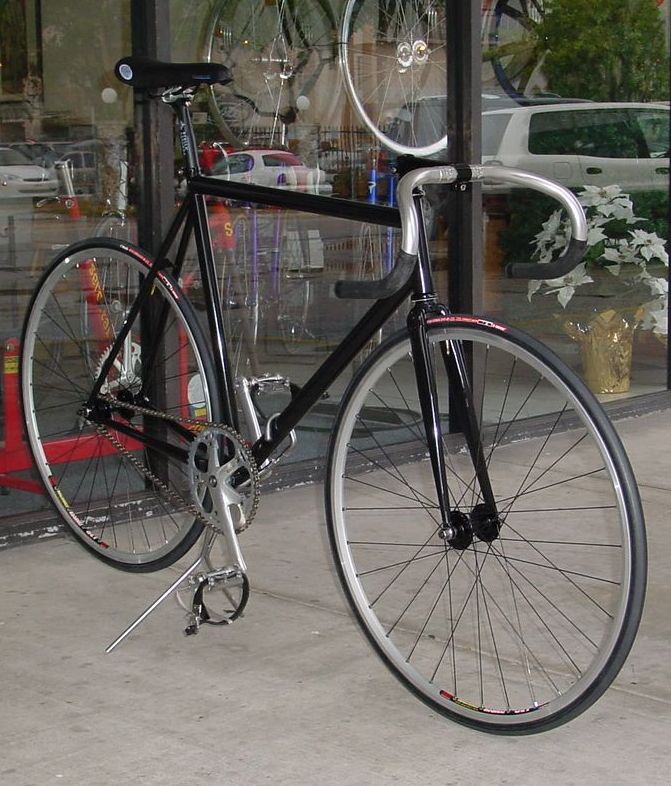Somehow these ‘fixed gear’ bikes became the weapon of choice for perhaps the coolest cyclists on the planet, the NY bike messengers. Although only a small proportion of these riders actually use them, the media coverage results in a higher perceived ratio between fixed and geared bikes. A system of working out how good a bike was also evolved. Classic bikes were much more valuable, as were old parts, viewed as being of a higher quality. Although now you can buy a fixed gear bike designed for city use off the shelf at a bike shop, originally they were built from old track racing bikes and parts. A geared bike converted to a fixed gear is frowned upon, and viewed as being a lose/lose option, as it still weighs much more then a dedicated track bike but has no gears to go up hills. One allowed option is a single brake on the front wheel. The front brake actually does the majority of braking due to the weight distribution when decelerating so this setup still offers around 80 percent of normal brake power. Having a classic track bike from the sixties or seventies, which you have restored and rebuilt yourself, from quality second hand parts from companies like campagnolo is the pinnacle of fixed gear culture. So what is so appealing about these bikes that mean they seem the epitome of cool culture? It could be the danger related to their use, it could be their simplicity. It could be the fact that they fit our image of what a bike should look like in its purist form, devoid of complications and added unnecessaries. It could be the classic style and looks of the bike, or its distance from the bikes that racers ride now, that seem to come from a different universe, with their carbon and Kevlar weaves, and lycra and enlarged thighs of the rider.

tuff riding music - Formed A Band by Art Brut, also anything else by them



